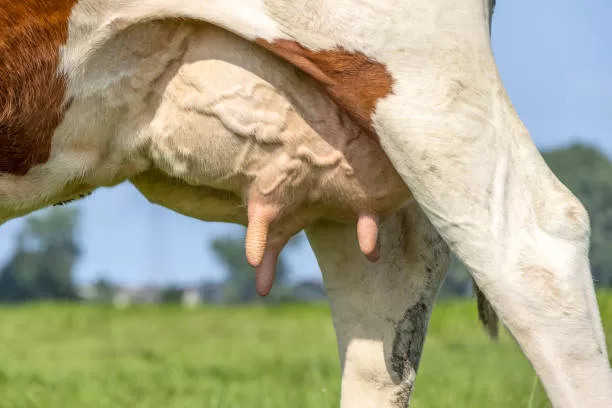Mastitis is an infectious disease of the mammary gland that can be acute or chronic. This disease is followed by inflammation of the udder.
Causal organism
There are two types of mastitis. One is Streptococcal mastitis which is caused by a bacterium known as streptococcus agalactiae. The second one is staphylococcal mastitis which is also caused by a bacterium called staphylococcus aureus.
Predisposing factors of mastitis
[1]Age- when it comes to age older animals are more likely to be infected as compared to younger ones.[2]The stage of the lactation period is whereby animals are likely to suffer from mastitis at the beginning and at the end of lactation.
[3]Udder attachment- Animals with large or loosely hanging udders and long teats are more susceptible to mastitis infection. So, such udders are liable to mechanical injury which facilitates infection.

[4] Incomplete milking- Whenever milk is left in the teat canal, most of the time it acts as a culture media for bacteria. This Is common in heavy milkers and especially where hand milking is practiced.
[5] Mechanical injuries and wounds on the teat or udder allow microorganisms entry into the udder.[6]Poor sanitation increases the multiplication of the bacteria causing mastitis.
[7]A poor milking technique may result in mechanical injury of the teats and weakening of the sphincter muscles of the teat
- Lou Retton age, family, children, husband, career, net worth.
- Joshua Carter Jackson, age, wife, children, career, net worth.
- Cassidy Hutchinson wiki, age, family, husband, children,
- Who is Cristiano Ronaldo? Work, Age, Education.
- Miranda Lambert bio, age, husband, children, career, net worth.
- Len Goodman Bio, Education, Career, Family, Net Worth
- Who is DR. William Samoei Ruto? Age, Net worth
Symptoms of mastitis
- Milk that has got pus, blood, thick clots, or turns watery.
- When the udder and teats are swollen, animals reject suckling or milking and also kick due to pain.
- Death of the infected quarter may result.
- The milk tastes salty and also contains fine clots or flakes, especially the fore milk.
Control and Treatment
- So, after every milking, use teat dip for every quarter.
- Open wounds on the teats should be treated immediately.
- Sharp objects that may be in grazing and milking areas should be collected to prevent injuries to the animal teats.
- Separate udder clothes should be used for each animal or the udder clothes are disinfected after milking each animal.
- Also, use a strip cup to check for any infection.
- Strict cleanliness and use of disinfectants during milking.
- Using the right milking technique.
- Use dry cow therapy where you infuse long-acting antibiotics in the animals’ teat canal when drying off the cow.
- List of Best private secondary schools in Nairobi County.
- Kenya Institute of special education, courses.
- A list of special secondary schools, and contacts.
- The best private primary schools in Nyeri county.
- Egerton university, fees, location, courses.
- Best Public High Schools in Kiambu County.
- List of Accredited Private Universities in Kenya